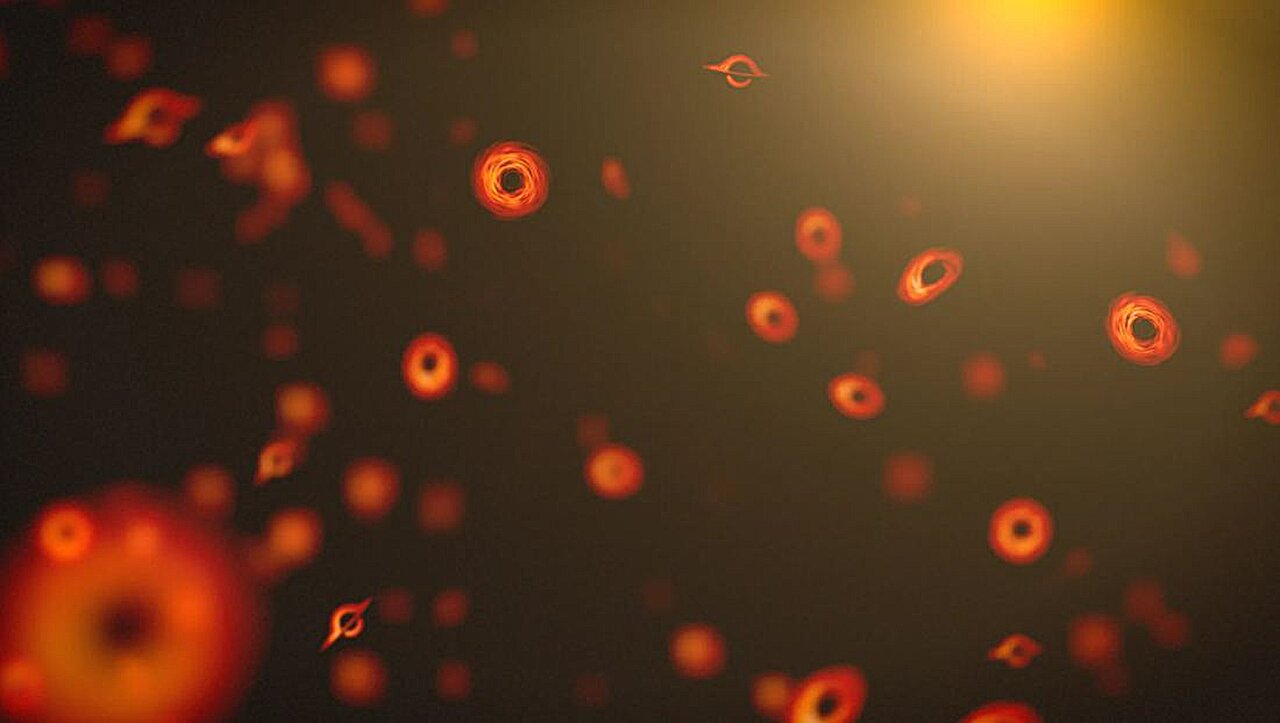At the very beginning of the Universe, even before the first stars exploded, the existence of fluctuations could have resulted in primordial black holes. Recently, scientists investigated different scenarios for their development and concluded that they may have displaced stars from their places.

“Celestial bullies”
The primordial black holes were formed early in the evolution of the Universe through processes different from the stellar collapse we are used to. However, it is quite possible that they still exist and actively influence the evolution of stellar systems, especially binary ones, with their gravity.
Regions of high density would simply collapse under their own gravitational influence, forming what have been called primordial black holes (PBHs). They are thought to range in size from subatomic to more massive than the Sun.
Like celestial bullies, they can “push” objects around, which can lead to extreme consequences such as the ejection of a star and its replacement by a black hole. A new paper explores the interaction of such systems and considers the ways in which we can identify them.
Black holes and dark matter
Whether primordial black holes are really the source of dark matter in the Universe is still a subject of debate. It is generally accepted among the astronomical community that they cannot fully explain all dark matter, but they may account for up to 10% of its condensations in the range of planetary masses ( from 10-7 to 10-3 solar masses). The question of whether PBHs explain any part of the dark matter in the Universe requires further analysis.
If we consider large scales, the PBH cannot be distinguished from the background of dark matter particles due to the irregularity of their distribution in the Universe, and therefore we have to search for a new unique theory. Observing black holes to understand how close the model is to reality is difficult, but it is possible to teach their interactions with stellar systems.
Interaction of stellar binary systems with a black hole
A paper by Badal Bhalla of the University of Oklahoma and a team of astronomers posted on the arXiv preprint server explores how black holes can lose energy when interacting with stellar binary systems. These interactions can lead to one of five possible results:
- Hardening – two bound objects lose energy to a third free object, causing their separation to decrease;
- Softening – free body transfers energy to the bound system, causing their separation to increase, but they remain bound;
- Disruption – free body transfers enough energy to the bound system so that the components separate and all objects remain unbound;
- Capture – bound objects capture a free object;
- Exchange – free object transfers enough energy to break a connection with one of the bound objects, while losing enough energy to bound another object.
The most realistic models of interaction
Previous studies have investigated softening and disruption in primordial black holes and binary interactions, as well as the capture model. The team suggests that softening is also unlikely, so is exploring the possibility of an exchange model.
They found that the exchange model should lead to a population of binary black holes in the Milky Way, and indeed some observations hint that they may exist. The team also suggests that it may be possible to detect PBHs in binary systems with a subsolar mass black hole by system properties.
Observations are now required to verify the model. The discovery of black holes in the binary system can be possible and in a certain way to confirm the obtained results.
According to phys.org


